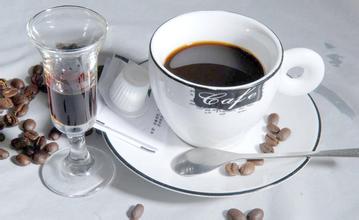Flavor classification characteristics of Ugandan coffee beans; description of taste and flavor; introduction to the production area of grinding scale
Flavor classification characteristics of Ugandan coffee beans; description of taste and flavor; introduction to the production area of grinding scale
The territory is located between the east and west branches of the East African Rift Valley, tilting gently from west to middle and low and flat in the south. Margarita Peak is 5109 meters above sea level, which is the highest peak in the country. There are many rivers and lakes and a large water area, so Uganda is known as "plateau water village" and "Pearl of East Africa". Lake Victoria is the second largest freshwater lake in the world and Africa, accounting for 43% of Uganda's territorial area. The White Nile (White Nile), which flows from Lake Victoria, flows through most of the country. Its unique scenery includes tropical forests and tea trees on the snow-covered slopes of Mount Ruwenzori Mountains, dry plants in Karamoja, rolling savannas in Acholi, Bunyoro, Tororo and Ankole, and fertile cotton fields in Teso. Tropical climate. Because of the high terrain, most areas are warm all the year round. The average annual rainfall is 1 000 mm. Agriculture is the main pillar of the country's economy. The population of agriculture and animal husbandry accounts for 90% of the country. Crops include plantains, cassava, millet, sorghum, corn and so on.
Due to the shortened delivery time, people drink relatively fresh coffee beans. But people who are used to drinking Chen beans are not used to the fresh taste, so they desperately pursue old Java coffee, so that the Indonesian government and some businessmen deliberately store fresh beans in warehouses for one or two years and then sell them to consumers. In fact, compared with fresh beans, the acidity of aged Java beans is close to zero, but the flavor is more intense. Because of the long storage time, the increase in cost and the limited quantity, Java has always been a hot item in the coffee market. In the 1880s, 0 merchants deliberately tampered with some fresh Guatemalan or Venezuelan beans to imitate aged Java for high prices. It is intolerable that 0 merchants dye coffee beans to make them look more like old Java, but there is no doubt that the dyed chemicals are certainly toxic.
Dry aroma (1-5): 3.2
Wet aroma (1-5): 3.4
Acidity (brightness) (1-10): 8
Taste (layered) (1-10): 8.5
Taste (alcohol thickness) (1-5): 4
Aftertaste (residue) (1-10): 8.1
Balance (1-5): 0
Basic score (50): 50
Total score (maximum 100): 85.2
Strength / main properties: medium strength / high oil content, simple and mild
Recommended baking degree: full city or full city+
Contrast: a unique African coffee, very similar to Indonesian coffee

Important Notice :
前街咖啡 FrontStreet Coffee has moved to new addredd:
FrontStreet Coffee Address: 315,Donghua East Road,GuangZhou
Tel:020 38364473
- Prev

Wallenford Manor Jamaica Blue Mountain Coffee Bean Flavor Description Grind Scale Variety Introduction
Wallenford Manor Jamaica Blue Mountain Coffee Bean Flavor Description Grind Scale Variety Introduction When it comes to Jamaica, everyone's eyes immediately light up because it produces the best Jamaica Blue Mountain coffee in the world. We absolutely believe that Jamaica Blue Mountain Coffee is the best coffee, it is very balanced acid, sweet, alcohol and bitterness, taste aromatic, drink
- Next

Introduction to the manors in the producing areas of El Salvador coffee beans by the method of flavor grinding and calibration
El Salvador coffee bean flavor grinding scale treatment variety production area manor introduction coffee fields are endless, most of them are harvested by machinery, in order to meet the economic benefits. When 75% of the coffee fruit in the coffee garden turns red, it starts to be harvested mechanically, followed by the same pre-operation of washing, moving into the sink to remove the floating beans, sifting out the sunken beans, and then using a large pulp screening machine to dig out the pulp and take it out.
Related
- Detailed explanation of Jadeite planting Land in Panamanian Jadeite Manor introduction to the grading system of Jadeite competitive bidding, Red bid, Green bid and Rose Summer
- Story of Coffee planting in Brenka region of Costa Rica Stonehenge Manor anaerobic heavy honey treatment of flavor mouth
- What's on the barrel of Blue Mountain Coffee beans?
- Can American coffee also pull flowers? How to use hot American style to pull out a good-looking pattern?
- Can you make a cold extract with coffee beans? What is the right proportion for cold-extracted coffee formula?
- Indonesian PWN Gold Mandrine Coffee Origin Features Flavor How to Chong? Mandolin coffee is American.
- A brief introduction to the flavor characteristics of Brazilian yellow bourbon coffee beans
- What is the effect of different water quality on the flavor of cold-extracted coffee? What kind of water is best for brewing coffee?
- Why do you think of Rose Summer whenever you mention Panamanian coffee?
- Introduction to the characteristics of authentic blue mountain coffee bean producing areas? What is the CIB Coffee Authority in Jamaica?

